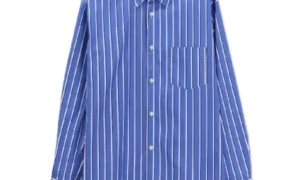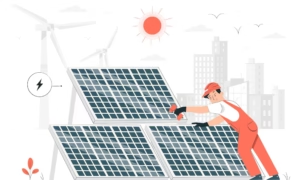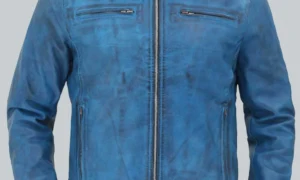Summer rashes are also called prickly and heat sweat rashes. It is critical to understand what summer rashes are and how they can have an effect on our skin. Summer rashes refer to diverse skin conditions that usually tend to flare up in the course of the warmer months. There are several causes, including some environmental factors, that trigger these rashes. These may include heat, humidity, sweat, and allergens. Anyone can get these skin issues, but they’re especially common among children and people with sensitive skin.
Types of common Summer season Rashes
To effectively prevent and deal with summer rashes, you need to discover them appropriately. Here are some common types of summer rashes you could encounter:
1. Heat rash
You can have a heat rash when your sweat ducts get blocked. It leads to the development of small red bumps or blisters, which are known as heat rash or miliaria. The areas of your body in which sweat collects, which include the neck, underarms, groin, and lower back, are where you may see it.
2. Sunburn
You can have this skin condition due to excessive exposure to the sun’s ultraviolet radiation. It causes redness, pain, and peeling of the skin. Sunburn can also show itself in other signs like blistering, swelling, or even fever in severe cases.
A dermatologist can offer the right diagnosis, recommend specific remedies, and deal with any underlying causes contributing to your summer rash.
3. Insect bites and stings
Mosquito bites, bee stings, and different insect bites can cause localized redness, itching, and swelling. A few people may also experience allergies, leading to extra severe signs and symptoms.
4. Allergic reactions
Allergic reactions to certain plants, such as poison ivy or oak, can bring about an itchy, pink rash upon touch. Those rashes regularly appear in a linear or patchy pattern and can be followed by blisters or hives.
5. Swimmer’s Itch
Swimmer’s itch, also referred to as cercarial dermatitis, is a rash resulting from an allergic reaction to parasites found in contaminated water in our bodies. It gives as itchy, raised bumps and is most typically seen in individuals who swim in freshwater lakes or ponds.

How to prevent skin rashes during Summer
Now that we have a better understanding of the commonplace summer rashes, let’s explore preventive measures to help you avoid those skin irritations altogether.
- Stay Hydrated: The most effective yet simplest method to prevent summertime rashes is via staying well hydrated. When you take water in its sufficient quantity, it helps regulate body temperature, keeps your skin moisturized, and aids in flushing out toxins. You should take a minimum of 8 glasses of water per day, and its intake.
- Dress smart: Carrying The right clothing can go an extended way in stopping summer rashes. Opt for lightweight, loose-fitting garments made of breathable fabric like cotton or linen. These materials allow air movement, keeping your skin cool and reducing the probability of heat rashes. Avoid tight-fitting clothes and fabrics that may trap sweat and irritate the skin. While planning of-doors sports, remember to carry long sleeves, pants, and a wide-brimmed hat to provide extra safety towards the sun’s harmful UV rays.
- Sun protection: Protecting your skin from the sun is important to prevent sunburn and different skin troubles. It is ideal to use sunscreen with an SPF of 30 or better. Use it on all uncovered regions of your body, even on cloudy days. Reapply every two hours or greater frequently if you are sweating or swimming. Additionally, seek shade throughout peak sun hours (normally between 10 a.m. and 4 p.m.) when the sun’s rays are strongest. put on shades with UV safety to shield your eyes and a huge-brimmed hat to shield your face and neck.
- Avoiding allergens: When you have recognized hypersensitive reactions to pollen, flowers, or different environmental triggers, take measures to decrease your exposure. Take a look at neighborhood pollen forecasts and attempt to limit door sports on excessive pollen count number days. Keep windows closed during top pollen times, use air purifiers in your home, and wash your clothes and bedding regularly to dispose of pollen particles. If you are prone to hypersensitive reactions from plants like poison ivy or oak, learn to identify these plants and avoid touching them. while hiking or spending time in wooded regions, wear long sleeves, pants, and closed-toe shoes as an added precaution.
- Maintaining good hygiene: Maintaining good hygiene practices can help prevent summer from developing sweat, microorganisms, and allergens. Take regular showers or baths to cleanse your skin and put off the sweat and dust. Use slight, fragrance-free cleansers that might not strip away the natural oils from your skin, as harsh soaps can cause dryness and infection. You should pat dry your skin softly. Any vigorous rubbing can lead to skin rash. Apply a moisturizer appropriate to your skin type to hold it hydrated and supple.
By implementing these preventive measures, you can substantially reduce the danger of growing summer rashes. But if you do discover yourself facing a rash, it’s vital to know how to treat it correctly.
Conclusion
Summer rashes may be a nuisance; however, with the right preventive measures and remedy strategies, you can experience the sunny season with healthy and rash-free skin. Do not ignore the need to stay hydrated, select appropriate clothing, protect your skin from the sun, and exercise good hygiene. And do not hesitate to speak with your skin specialist if your rash persists or worsens.
FAQs
1. Can heat rashes arise in adults?
Yes, heat rashes can arise in adults. They are not special to infants and youngsters and can affect people of any age. Heat rashes increase when sweat ducts become blocked, leading to the characteristic red bumps and blisters on the skin.
2. Are there any specific meals that can cause summer rashes?
While there aren’t any specific ingredients that universally trigger summer rashes, certain people can also have sensitivities or allergies to particular meals, which could exacerbate skin conditions. Common culprits consist of highly spiced foods, citrus fruits, shellfish, and food components.
3. Is it safe to use corticosteroid lotions for summer rashes?
These creams are safe to use with a doctor’s prescription. They treat skin rashes effectively. To be safe, you should always abide by the manufacturer’s or a medical professional’s instructions.









































